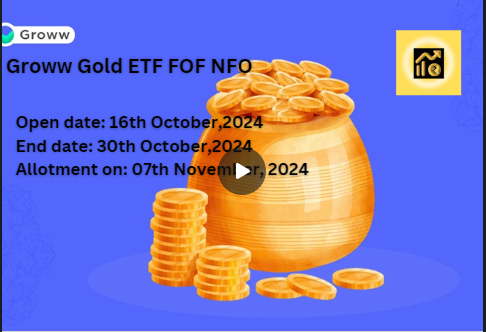Discover how savvy investors are optimizing idle cash with liquid ETFs
Introduction: The Need for Smarter Cash Management in Equity Trading
In the dynamic world of equity trading, every minute is an opportunity—and every rupee, a potential profit. But timing your investments perfectly is often thwarted by one crucial problem: liquidity management. Traders and active investors often face the dilemma of what to do with idle cash in their trading accounts. Transferring it back to their bank accounts is time-consuming, offers meager interest, and disrupts trading continuity.
This is where a new financial instrument is stepping into the spotlight—liquid ETFs.
Over the last couple of years, liquid ETFs have gained popularity as a smart, agile, and profitable way to manage cash for equity traders. With the seamless integration of liquidity, safety, and flexibility, liquid ETFs offer a convenient alternative to traditional liquid mutual funds and savings accounts.
In this extensive article, we will explore everything you need to know about liquid ETFs, how they function, their advantages and limitations, and why they are quickly becoming the go-to tool for equity traders in India.
What Are Liquid ETFs?
➤ Definition
Liquid Exchange-Traded Funds (ETFs) are open-ended mutual fund schemes that are traded on the stock exchange and primarily invest in overnight money market instruments like tri-party repos (TREPs). These ETFs aim to provide returns in line with short-term interest rates while maintaining high liquidity.
Unlike traditional liquid mutual funds, which may invest in instruments with maturities up to 91 days, liquid ETFs stick to extremely short-term investments. This allows them to offer almost instant access, which is critical for active traders.
➤ Key Features of Liquid ETFs
- Traded like stocks on major Indian exchanges (NSE, BSE)
- Zero exit load
- Highly liquid with T+1 settlement
- Returns in line with overnight repo rates
- Low credit risk due to exposure to government-backed instruments
- Eligible for margin pledge in F&O trades
➤ Historical Background
The first liquid ETF in India was Liquid BeES, launched in 2003 by Benchmark Mutual Fund (now under Nippon India Mutual Fund). While innovative, early versions were structured as IDCW (Income Distribution cum Capital Withdrawal) plans. These had tax inefficiencies and complexities related to dividend accounting.
Fast-forward to 2023, Zerodha Fund House introduced India’s first growth NAV liquid ETF—the Nifty 1D Rate Liquid ETF, setting a new benchmark in how traders manage liquidity.
The Rise of Liquid ETFs Among Equity Traders
Why are brokers and investors so excited about this product?
The Traditional Cash Management Pain Point
Let’s say a trader sells shares worth ₹10 lakh. Ideally, this cash should immediately start earning returns. But in reality, it either:
- Stays idle in the trading account earning zero returns, or
- Gets transferred to the bank account, earning a meager 2.5–3% p.a.
Now imagine instead parking that ₹10 lakh in a liquid ETF immediately after the stock sale. It starts earning a 6% return without locking away liquidity. When a new buying opportunity arises, the trader sells the ETF units, and the funds are instantly usable via trading limits.
This loop of earning + liquidity is the magic of liquid ETFs.
Why Brokers Love Liquid ETFs
Every month, brokers are required by SEBI to transfer unutilized funds in client accounts back to their linked bank accounts. This administrative burden increases operational complexity.
By encouraging clients to park excess funds in this ETFs instead, brokers:
- Avoid fund outflows
- Retain AUM (Assets Under Management) within their ecosystem
- Reduce the hassle of periodic settlements
Many leading brokers, including Zerodha, AngelOne, and Groww, now offer liquid ETFs commission-free to facilitate smoother adoption.
How Liquid ETFs Work in Practice
Let’s understand the process with a simple 6-step illustration:
Step-by-Step Flow
- Sell equity shares on the exchange via your trading account.
- Simultaneously place a buy order for equivalent units of a liquid ETF.
- The liquid ETF units are credited to your demat account on T+1.
- Hold the units until a new opportunity arises.
- Sell the ETF units when ready to re-enter equity markets.
- Funds are credited on T+1, but your buying limit is available immediately.
This creates a seamless transition between equity and cash without moving funds between the trading and banking ecosystem.
5 Powerful Benefits of Liquid ETFs for Traders
Let’s now explore the core advantages in detail:
✅ 1. Instant Liquidity with No Transfer Hassles
No more bouncing money between your trading account and bank account. This ETFs allow you to retain capital within your trading ecosystem while earning returns.
✅ 2. Earn Higher Returns on Idle Money
Bank savings yield ~3%. Liquid ETFs, on average, offer returns between 6–6.3%.
Here’s a quick snapshot:
| ETF Name | 1-Year Return | Expense Ratio |
| Zerodha Nifty 1D Rate Liquid ETF | 6.21% | 0.27% |
| Kotak Nifty 1D Rate Liquid ETF | 6.33% | 0.19% |
| Nippon Liquid BeES | 5.75% | 0.69% |
Source: Value Research, 2025
✅ 3. Enable F&O Margin Utilization
Liquid ETF units can be pledged to earn trading margins in the F&O segment. They’re treated as cash equivalent, making them highly efficient for margin optimization.
✅ 4. Zero Exit Loads and Broker Commissions
Unlike liquid mutual funds (which impose exit loads for <7-day withdrawals), they are free from exit penalties. Also, many brokers waive off trading commissions to boost adoption.
✅ 5. Tax-Efficient Growth NAV Option
New-age ETFs like Zerodha’s growth NAV structure avoid frequent dividend payouts. Returns are reflected in NAV appreciation, and only capital gains tax applies upon sale. This avoids complex dividend accounting.
Liquid ETFs vs Liquid Mutual Funds vs Savings Accounts
| Feature | Liquid ETF | Liquid Mutual Fund | Savings Bank |
| Returns | ~6–6.3% | ~7.2% | ~3% |
| Liquidity | Real-time trading | Same-day redemption (T+1) | Instant |
| Exit Load | None | Graded for <7 days | None |
| STT Applicable? | No | No | No |
| Expense Ratio | ~0.30% | ~0.15% | None |
| Tax Efficiency | High (growth NAV) | Moderate | Low |
What to Watch Out for: Limitations of Liquid ETFs
No investment instrument is perfect. Here are some cautions to keep in mind:
1. Not a Replacement for Liquid Mutual Funds
While liquid ETFs are great for short-term parking, they do not replace mutual funds for longer holding periods or strategic allocation.
2. Slightly Lower Returns
This ETFs tend to yield 6.1–6.3%, while liquid mutual funds often deliver 7.2–7.3% annually.
3. Higher Expense Ratios
Despite being passive instruments, this ETFs may charge 30–31 basis points, compared to 15 bps for mutual funds.
4. Liquidity Risk in Low-Volume ETFs
Always choose ETFs with high daily volumes. Otherwise, liquidity could be misleading, and you may struggle to enter or exit at favorable prices.
Who Should Use Liquid ETFs?
- Active Equity Traders: To optimize idle capital between trades
- F&O Traders: To pledge for margin
- DIY Investors: Looking for better-than-bank returns with high liquidity
- High-Frequency Traders: Who need quick access and seamless fund movement
Expert Opinions
“This seamless experience is possible as liquid ETFs trade in the same segment as equities.”
— Vishal Jain, CEO, Zerodha Fund House
“Use it for the convenience, not for returns. It’s not comparable to liquid funds.”
— Juzer Gabajiwala, Director, Ventura Securities
FAQs – Frequently Asked Questions
1. Are liquid ETFs safe?
Yes. They invest in short-term repos and overnight instruments, carrying negligible credit and interest rate risk.
2. How can I invest in a liquid ETF?
Through any stockbroker or trading platform—just like buying or selling shares.
3. What are the tax implications?
Only capital gains tax applies on growth NAV-based ETFs. No TDS or dividend tax.
4. Can I set up a SIP in liquid ETFs?
Not directly. But you can automate investing in ETFs via brokers that support recurring buy orders.
5. Are they suitable for emergency funds?
Not ideal. This ETFs settle on T+1. For instant access, savings accounts or sweep-in FDs may be better.
Final Thoughts: A Strategic Upgrade for Market-Savvy Investors
In the age of digital trading and real-time execution, traditional ways of parking idle funds no longer cut it. Liquid ETFs offer a compelling alternative that combines:
- Speed
- Flexibility
- Better-than-bank returns
- Simplicity
- Tax efficiency
While not a magic bullet, these are a perfect tactical tool for equity traders who understand timing and liquidity’s role in success.
If you’re a modern investor looking to optimize your cash flow without compromising on returns or flexibility, it might be time to make room for this investment style in your strategy.






